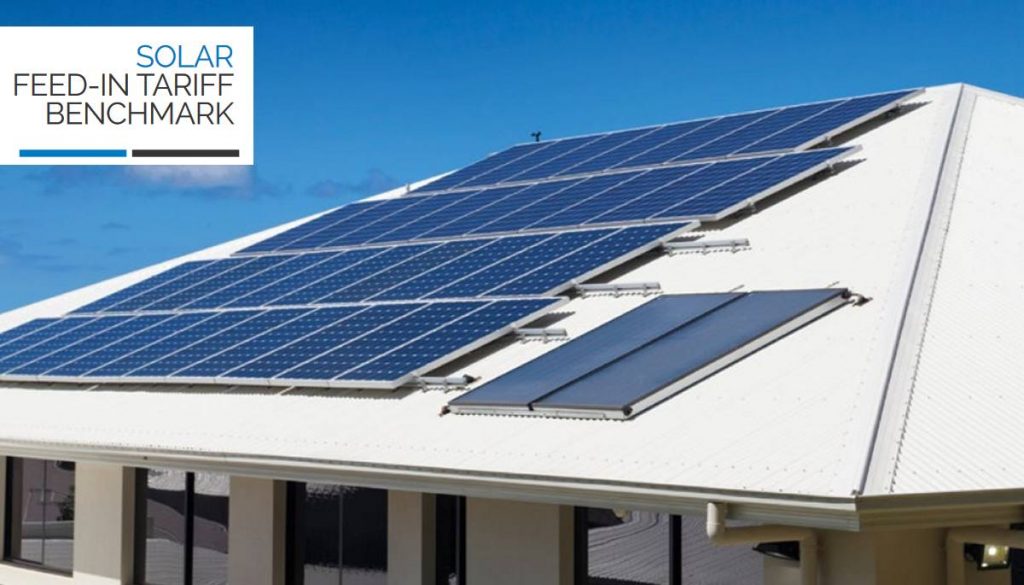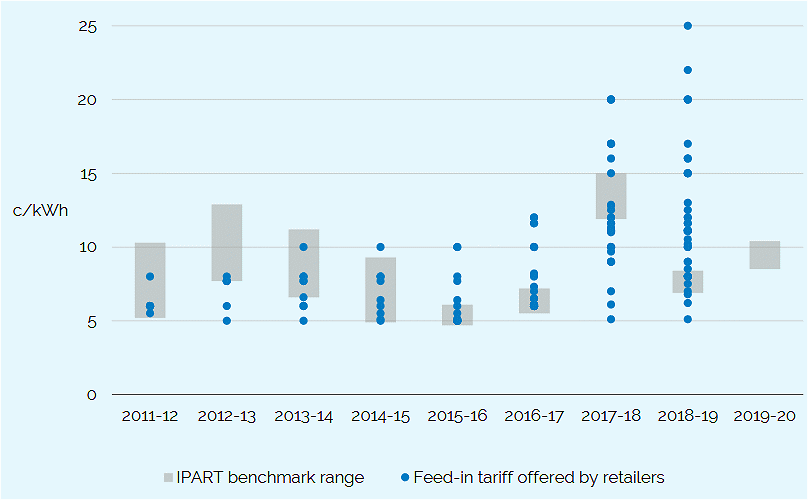
New South Wales’ Independent Pricing and Regulatory Tribunal (IPART) has released guidance on solar feed in tariff rates for 2019/20.
In New South Wales, electricity retailers aren’t compelled to offer a solar feed-in tariff, but IPART sets a benchmark range each year.
For 2019/20, IPART has increased the range from 6.9c – 8.4c per kilowatt hour in 2018/19 to 8.5c – 10.4c for the “all day rate”; that is, for electricity generated at any time of the day.
Here’s how the benchmark all day range compares to previous years.
While the above also indicates quite a few electricity retailers have been offering over and above IPART’s recommended range this year, it’s good to bear in mind that a higher feed- in tariff doesn’t necessarily mean the best overall deal. Solar power system owners should carefully compare electricity deals and take note of the fine print.
Time Dependent Feed In Tariff Benchmarks
Also provided are ranges for another solar feed-in tariff option retailers can provide – “time dependent” feed in tariffs, which are based on the time of day the electricity is exported.
For 2019/20, the time dependent rates are as follows.
- 8.4c – 10.2c/kwh 6 am to 3 pm
- 8.8c – 10.7c/kwh 3 pm to 4 pm
- 9.6c – 11.7 c/kwh 4 pm to 5 pm
- 11.6c– 14.2c/kwh 5 pm to 6 pm
- 13.5c– 16.5c/kwh 6 pm to 7 pm
- 10.6c – 12.9c/kwh 7 pm to 8 pm
The 6 am to 3 pm period is when the majority of solar electricity exports occur (currently the rate for that period is 6.5c to 7.9c).
Again, retailers aren’t compelled to offer a time‑dependent feed in tariff option and according to IPART most are continuing to only offer an average rate for all electricity exports.
Incorporated in the rates are savings to networks through having to transport less electricity from remote locations – which IPART says increases the wholesale value of solar exports by around 6%. Also included is the value of avoided NEM fees and charges, which is pegged at 0.08 c/kWh on the all day rate.
While solar exports vary by season, the benchmarks are based on average exports and prices over a year. IPART says it sets its rates to reflect the price of what it would cost retailers to buy electricity from large generators.
“Our benchmark range for 2019-20 is higher than last year because the forecast wholesale price is higher.”
IPART’s final report on 2019/20 solar feed in tariff benchmarks can be viewed here.
Related: Solar feed in tariffs in New South Wales.


 RSS - Posts
RSS - Posts



Speak Your Mind